MALNOURISHED Cultural ignorance paved the way for pellagra
by Tanya M. Peres (Gravy, Fall 2016)
Ancient farmers domesticated corn, or maize, about 9,000 years ago in the Rio Balsas River region of present-day Mexico. From there, dried kernels made their way along ancient trade routes to other locales in Mesoamerica, Central America, and eventually North America. Corn was easy to grow and produced a high yield. Eventually, entire communities flourished alongside maize crops. Corn traveled to Europe in the post-Columbus world and spread across the continent. When early European colonists arrived in North America, Native peoples, especially the Iroquois, taught them how to farm and prepare corn. An essential step in the preparation of corn is nixtamalization, which liberates the chemical compounds niacin and tryptophan and makes them bioavailable. While we do not know exactly when ancient Mesoamericans developed this method, the earliest culinary equipment associated with the process dates to approximately 3,200 years ago. Real and long-lasting problems arose when corn became a commodity crop as early as the 1700s in Europe. In the nineteenth-century rural South, sharecroppers grew it, sold it, ate it, and became sick—all because of a lost recipe.
In the nineteenth-century rural South, sharecroppers grew corn, sold it, ate it, and became sick—all because of a lost recipe.
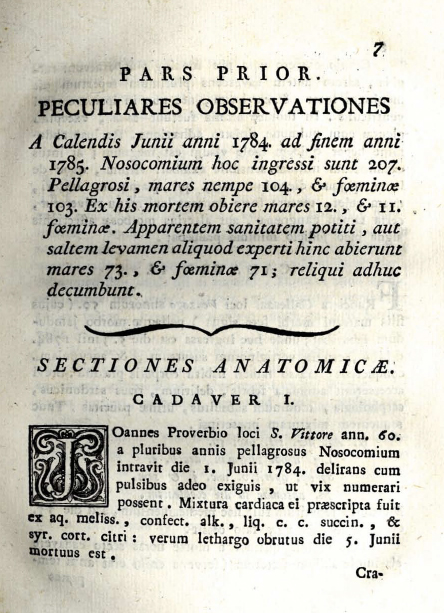
Centuries earlier, the indigenous populations of North America had successfully adopted maize culture and preparation from Central America. Yet the process of nixtamalization was left behind when corn crossed the Atlantic. European farmers were seemingly unaware of this essential step. Their ignorance of nixtamalization severely impacted the American colonies. Corn-dependent populations in both Europe and North America suffered from pellagra, a chronic niacin deficiency that brings on four progressively catastrophic “Ds”: diarrhea, dermatitis, dementia, and death. The human body uses niacin, or vitamin B3, to control blood sugar, process fats, maintain healthy skin, and make new DNA. Early symptoms of pellagra include loss of appetite, irritability, and vomiting, followed by inflammation of the mouth and tongue and a scaly red rash on the hands and neck.

Gaspar Casal, a Spanish physician, first diagnosed pellagra in 1735. The disease also showed up in eighteenth-century Italy—its English name likely derives from the Italian pelle agra, meaning “rough skin.” Two centuries later, pellagra reached epidemic proportions in the American South.
It afflicted rural poor sharecroppers, orphans, mental-hospital patients, and those living in coal-mining camps and cotton-mill towns. These populations often lacked fresh meats and produce, leaving them with an unvaried diet based on cornmeal.
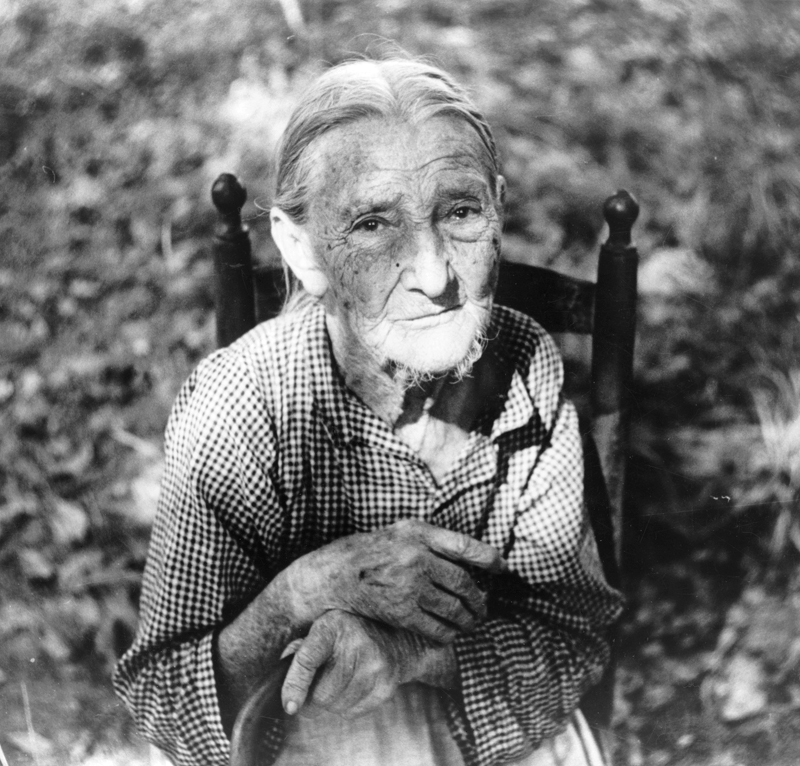
An agricultural invention from the turn of the twentieth century unintentionally hastened the spread of pellagra. John Beall of Decautur, Illinois, patented the Beall degerminator in the United States in 1901. Degerming corn reduces processing time but lowers its niacin content. (Today, the machine is still used to dry-mill 90 percent of all corn globally.)

In 1914, the U.S. government tasked Dr. Joseph Goldberger, a Hungarian-born infectious disease specialist, with determining the cause of the pellagra epidemic. He proposed that pellagra was a dietary disease and not one caused by germs. The following year, Goldberger conducted an experiment on twelve prisoners at the Rankin State Prison Farm in Mississippi. The men ate only corn and corn-based foods: likely cornbread, grits, and fresh corn. Within six months, more than half of them had developed symptoms. When they returned to a diet that included fresh meat, the symptoms disappeared. (Unlike the victims of the infamous Tuskegee syphillis study, these prisoners knew about the experiment and negotiated pardons from Governor Early Brewer in return for their participation.)
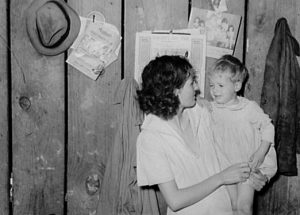
Critics called Goldberger a fraud. Luckily for those who suffered from pellagra in the South, he persisted. In 1916, Goldberger took drastic measures to prove his hypothesis. He injected blood from a pellagra sufferer into the arm of his assistant, Dr. George Wheeler. Wheeler then returned the favor. They took swabs from the infected patient’s nose and throat and rubbed them in their own noses and throats. Finally, they swallowed capsules containing scabs from the patient’s skin rashes. They repeated the experiment, enlisting friends, colleagues, and Goldberger’s wife. No one contracted pellagra.
Goldberger’s research proved that pellagra was a dietary disease, and that it could be reversed or avoided by consuming fresh meats, milk, eggs, and other nutrient-rich foods. The national Public Health Service instructed physicians to prescribe a nutrient-rich diet for Southerners at the highest risk of suffering from pellagra. Unfortunately, in the poorest pockets of the rural South, doctors bristled at taking orders from the East Coast medical establishment. Many ignored the new recommendations.
Unfortunately, not all Southerners could afford to take this advice.
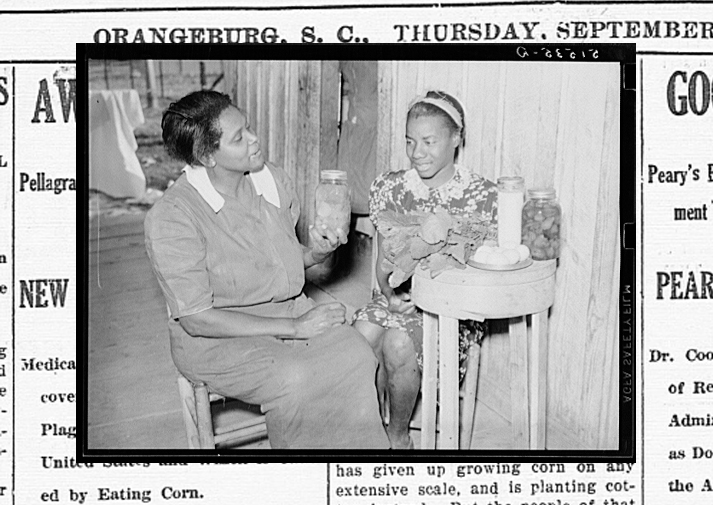
Public health officials persisted. Beginning in 1915, the Department of Pellagra Research ran ads in Southern newspapers with the slogan “Own a Cow,” urging farmers to consume some of their homegrown milk instead of selling it to “city folks.” Unfortunately, not all Southerners could afford to take this advice. When cotton prices tumbled in 1920, pellagra cases surged again.
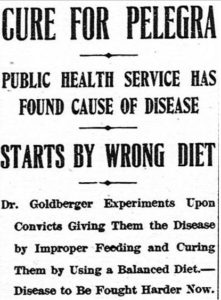
Some Southern leaders worried more about image problems than a public health crisis. One South Carolina politician, James F. Byrnes, feared that coverage of the pellagra epidemic would steer investors and tourists away from South. In the summer of 1921, he wrote a strongly worded letter to President Harding, claiming that pellagra statistics had been overstated and the President had been “misled…into making statements that parts of the South were actually menaced with famine and plague.” Finally, federal recommendations to fortify the nation’s bread and flour supplies with thiamine, niacin, and iron led to the eradication of pellagra in the South by 1945.
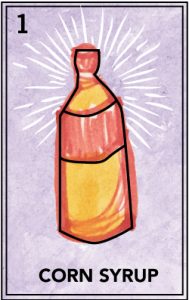
Interestingly, diets heavy in cornmeal and low in fresh fruits, vegetables, and meat lack tryptophan, an essential amino acid that makes niacin. As Goldberger noted in his research, indigenous people in Mexico and North America didn’t suffer from pellagra. They knew how to soak dried corn kernels in limewater and how to pair corn with companion nutrients. Two centuries of human suffering could have been avoided if Spanish explorers had recorded the instructions for processing and serving maize. Nixtamalization was no secret—many of the steps occurred outside of houses in easily observed public areas. The Europeans chose not to pay attention to this key practice.
Two centuries of human suffering could have been avoided if Spanish explorers had recorded the instructions for processing and serving maize.
Archaeologists credit the domestication of corn and the nixtamalization process with providing a stable foundation on which the indigenous cultures of the Americas flourished. Growing and storing a surplus of foods, especially corn, enabled Precolombian peoples to focus their attention on art, politics, science, and architecture. Corn nourished civilizations for thousands of years before Columbus ever stepped foot in the “New World.” Anthropologists and food historians see the unwillingness of the Spaniards to adopt indigenous foodways as the reason corn is mischaracterized as a low-nutrition food. The unearthing of ancient foodways allows us to understand and appreciate the complex relationships between Southerners and our totemic foods.
Tanya M. Peres is a zooarchaeologist and an associate professor of anthropology at Florida State University. She is at work on a book about the prehistoric roots of Southern foodways. Part I of this article appeared in the summer 2016 issue of Gravy.
Sign up for The Digest to receive Gravy in your inbox.
![]()
Top image: Maize Goddess, A.D. 1400-1519. Aztec, Central Mexico. Denver Museum of Art.





